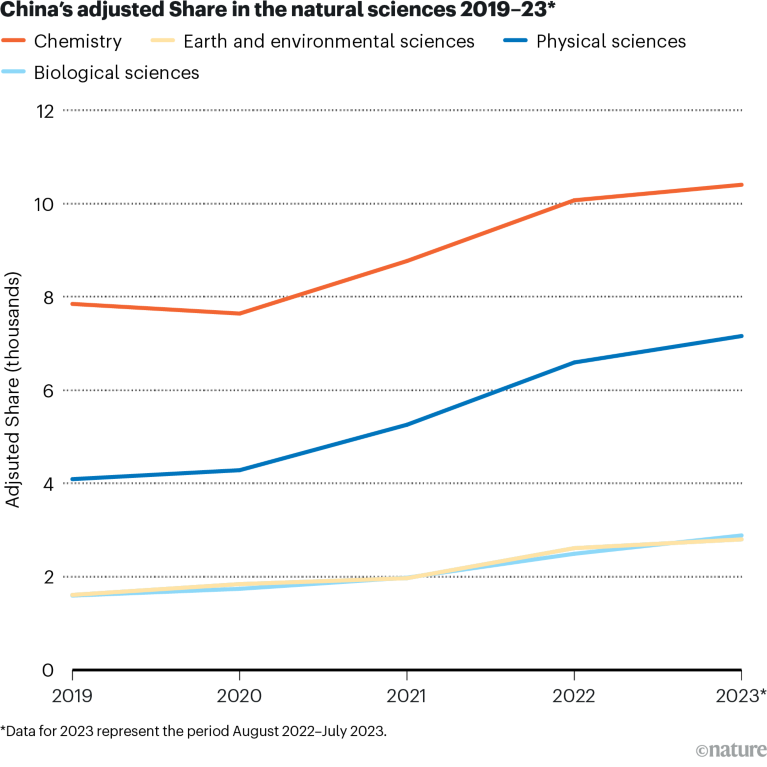Strong potential
Chemistry and physical sciences are clear areas of focus for China, accounting for 85% of the country’s total Share in the Nature Index in 2023*. But output in other subjects is growing fast. China’s adjusted Share in biological sciences increased by 15.8% from 2022 to 2023* — the highest percentage among the four natural-sciences subjects shown below.
Source: Nature Index. Analysis by Bo Wu. Infographic by Simon Baker, Bec Crew and Tanner Maxwell
Topic trends
The top fields of research (FORs) in each of the five subjects tracked by Nature Index are shown. The most dominant FORs across the respective areas are biochemistry and cell biology, at 36% of biological-sciences output, and materials engineering, which represents 34.7% of physical-sciences output. FORs can relate to more than one subject: biochemistry and cell biology is also among the top five FORs for health sciences, for instance.
Source: Nature Index. Analysis by Bo Wu. Infographic by Simon Baker, Bec Crew and Tanner Maxwell
Looking outwards
China’s areas of relative weakness have the highest percentage of internationally collaborative papers. For most subject areas, China’s international-article percentage was lower than every other leading country in the Nature Index in 2023*. In biological sciences, however, it is 54.1%, a higher proportion than the United States (52.7%).
Source: Nature Index. Analysis by Bo Wu. Infographic by Simon Baker, Bec Crew and Tanner Maxwell
Strength in numbers
China might be more outward-looking in its approach to biological sciences research, but it still dominates its top three international partnerships in the subject. A different dynamic can be seen in its collaboration with Harvard University in Cambridge, Massachusetts, which has more than double the collaboration score (6.39) of the Chinese Academy of Sciences in Beijing (3.02), in the fourth-ranked international partnership in the subject (not shown).
Source: Nature Index. Analysis by Bo Wu. Infographic by Simon Baker, Bec Crew and Tanner Maxwell
Concentrated expertise
It’s perhaps no surprise that China’s largest research institute, the Chinese Academy of Sciences, forms five of the country’s ten leading international partnerships in biological sciences. What is striking is the strength of the University of Hong Kong — a much smaller institution — which forms the top three international health-sciences collaborations. Among China’s top international collaborations in health sciences and biology, the University of Sydney is the only institution from outside Europe and the United States.
Source: Nature Index. Analysis by Bo Wu. Infographic by Simon Baker, Bec Crew and Tanner Maxwell
